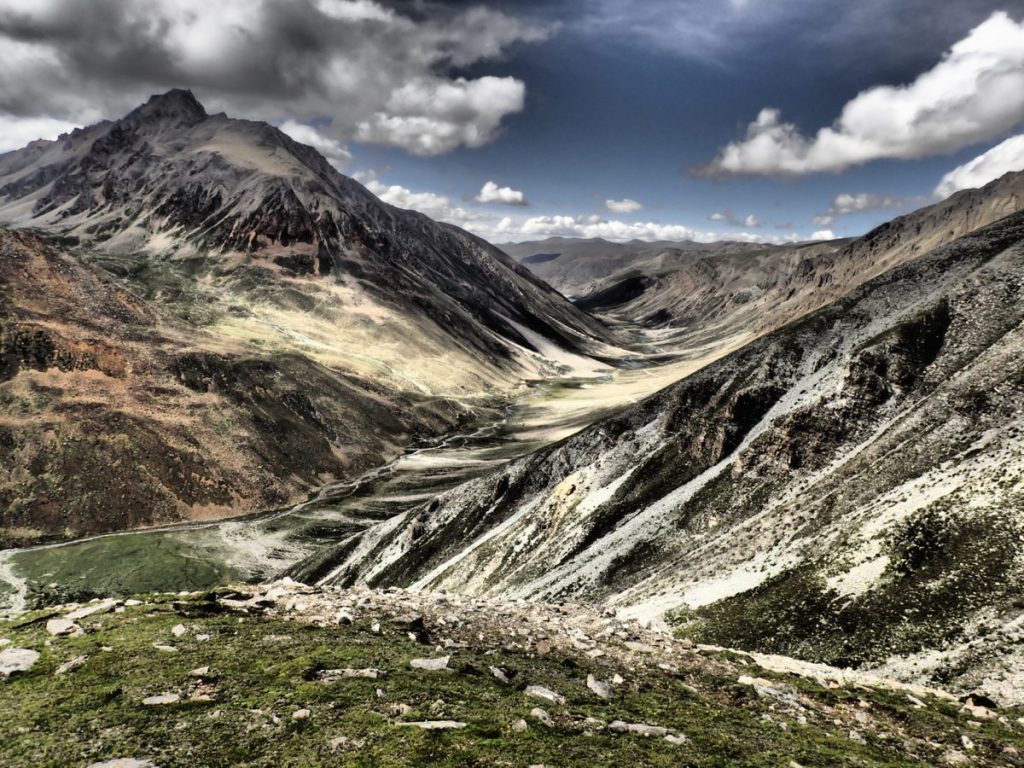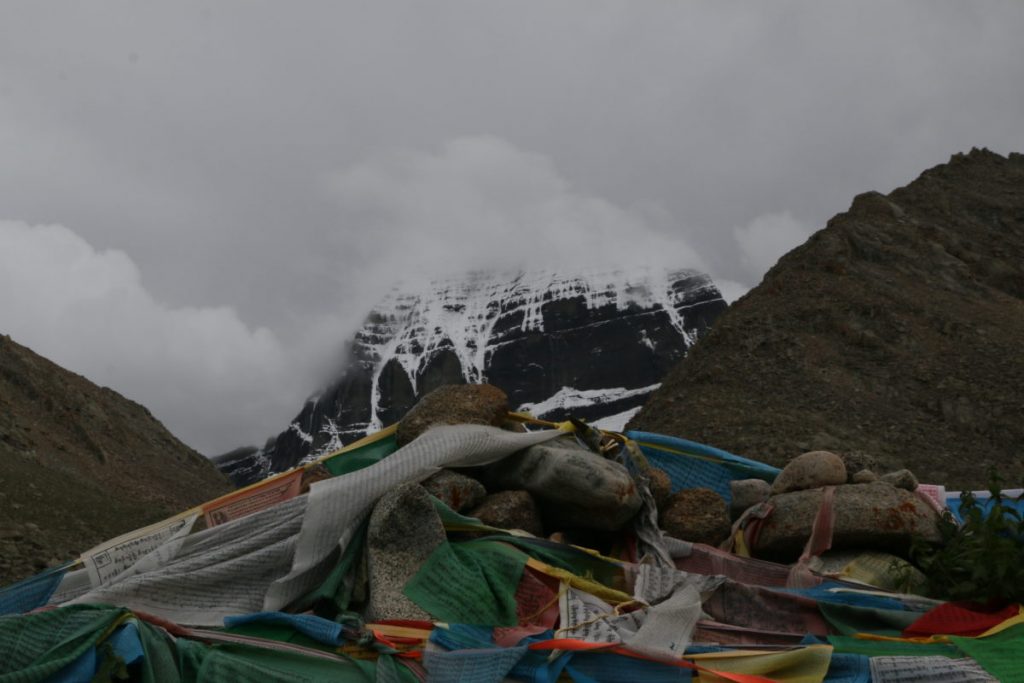2016 Year in Review – Trump, Fake News, Standing Rock and Tibet
It’s hard to know where to begin a recap post for an unprecedented year like 2016. There are many possible things to reflect on from this past year, so this end-of-year countdown only touches on what I felt were personally some of the most important moments in 2016–Trump, Fake News, Standing Rock and my pilgrimage to Tibet.
#4 – The Rise of Trump
An obvious mention in 2016–perhaps it might be better called a low point–was the unlikely victory of Donald Trump in the presidential race. From everything we have seen so far, a Trump presidency promises four years of abysmal social relations informed by Ur-fascism, white supremacist demagoguery and the further consolidation of corporate and elite power in Washington.
The dangers of a Trump presidency should not be underestimated, as I wrote shortly after the elections for a piece in Public Seminar, What to Do After the Election.

Times like these give me a chance to dust off the old agit-prop graphics machine, which this year lead to this “Matryoshka Trump” piece. The figures in the dolls are his cabinet appointments, plus good ole’ Vlad and a special surprise in the center… Apparently the Russian puppet makers were already one step ahead of me, as I found out later in a Reuters story about real Trump Matryoshka dolls on sale in Moscow!
For the serious collectors, check out this amazing 5 piece Matryoshka set from Golden Cockerel in Russia, with an amazing Trump faux hairstyle. As their website boldly proclaims, they only sell “gifts fit for a czar.” This Trump doll is surely no exception.
#3 – Fake News
Slightly different than the Trump victory, but still related, was the spike in incidents of fake news. Commentators like WaPo columnist Barton Swaim argued “the rise of fake news, if it’s anything, is an indictment of America’s newsrooms.”
It’s true that mainstream news coverage is becoming slightly worse each year, but his basis claims miss the deeper phenomenon at work, which is not poor newsroom reporting.
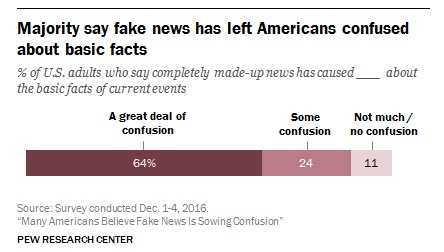 As Gallup Polls and the Pew Research Center data have shown, the problem is not so much sloppy news reporting, as Swaim argues, although there is surely some of that going on.
As Gallup Polls and the Pew Research Center data have shown, the problem is not so much sloppy news reporting, as Swaim argues, although there is surely some of that going on.
Rather, the phenomenon of fake news is a result of the rise of hyper-partisan and ideologically driven news companies catering to a narrow partisan viewer base that is uninterested in dissenting opinions. This phenomenon is most pronounced among the politically and religiously conservative and socially isolated segments of rural America–precisely those areas which most strongly backed Trump–but this dynamic is not strictly a rural phenomenon. The central danger of a hyper-partisan media ecosystem is that it reinforces and maintains large segments of the public in a perpetual state of ignorance and misinformation. This not only makes it easier to manipulate the masses, but also makes it harder to expose corruption and abuses of power, since truth is sacrificed in favor of defending the party line no matter the public dangers.
Pizzagate was a prime example of the conservative side of this story, where a closet kook fed nothing but Alt-right conspiracy theories decides to become a lone gunman for “justice.” Claims that the Pope had endorsed Bernie Sanders was a far less benign but still fake liberal version of this same narrow, hyper-partisan dynamic playing out. For a roundup of 2016 fake news stories, check out this SF Gate story on fake news in 2016. For some of the underlying research data on these fake news stories, check out this BuzzFeed survey, which is quite revealing.
I’ve also written a bit more on this topic in another recent post for the State of Formation, linking some of these issues to reflections on Trappist monk and scholar Thomas Merton and his ideas of Christian grace and social justice. You can read the full article there: A Pagan Reflects on Thomas Merton, Politics, and Christian Grace.
#2 – Standing Rock
While 2016 had no shortage of social and environmental justice issues to rally around, perhaps the most important and inspiring of these was the mobilization to stop the Dakota Access Pipeline in South Dakota from further impacting the Standing Rock Sioux’s lands. What began as another pipeline in North America turned into something bigger than anyone could have imagined.
By mid December, #NODAPL and Stand with Standing Rock had morphed into an international movement not only about protecting tribal lands from yet another ill-conceived and environmentally destructive resource extraction project (oil pipelines in this case), but about sacred Earth-based activism, Native sovereignty and inter-continental social movement alliance building.
The image that really solidified that for me is below, originally posted by the Sacred Stone Camp, showing a delegation of Indigenous Kichwa activists from Sarayaku, Ecuador who have fought oil and gas extraction projects in the Amazon and Andes, standing in South Dakota in solidarity with Native activists from North America. As others have noted, Standing Rock was important not only for how it helped to bring together many social and environmental justice and human rights activists, but also as a rallying point to bring Indigenous nations together in solidarity as well. As someone writing about these issues for a PhD, there is no shortage of important insights to be had from these recent events.
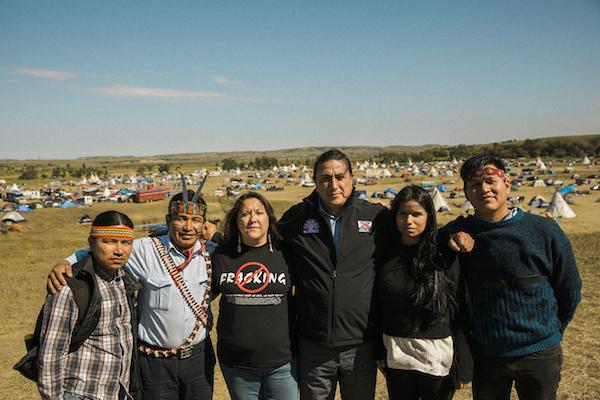
Franco Viteri, part of the Kichwa delegation, highlighted one aspect of what I call Earth-centered activism in my own work, in this case calling our attention to the commonalities between Indigenous Kichwa and Sioux worldviews concerning care for the Earth.
My people are very conscious, because of our history and our tradition, just like the tribes here, of our connection with nature, with Mother Earth; we know that this is what gives balance to life here on earth. The transnational corporations, like those trying to build this oil pipeline, are blind because they don’t understand the language of nature.
While the initial victory to protect Standing Rock this December is encouraging, this fight is a long way from over, and this is only one of many similar issues going on in North America, to say nothing of the rest of the world. If one thing is sure, it is that 2017 will bring even more fights like this one into the open.
#1 – Pilgrimage to Tibet
Although both of the former are important and memorable moments in 2016, without a doubt the highlight for me was my pilgrimage through Nepal and Tibet to visit Mount Kailash and Lake Manasarovar. For those who know me or have followed by posts, this was the third such trip I’ve taken in as many years, and was the culmination of a three-year research project on sacred landscapes in the Himalayas, known as the Sacred Himalaya Initiative (SHI), which I have helped to coordinate at the India China Institute at The New School. Here is a map of the general area we have worked in, with the bright green circle near the top depicting the kora route we walked around Mount Kailash.
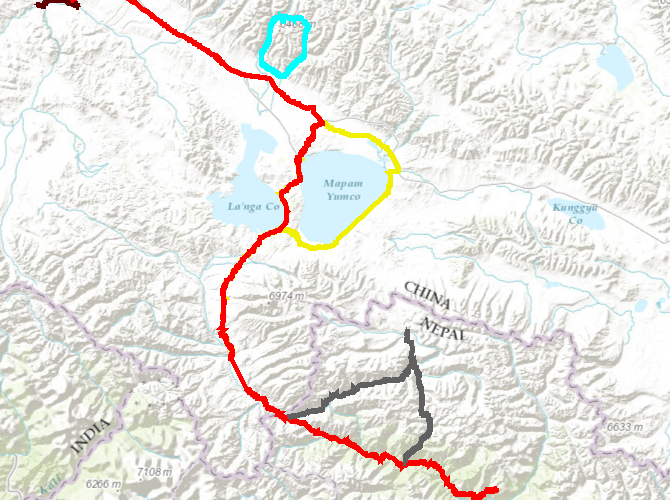
After trips through western Nepal and northern India the past two summers, this trip took up across western Nepal again, but this time instead of looping back, we continued northwest into Tibet and towards the sacred mountain, a site famous to pilgrims from across South Asia, and an area which figures prominently in the major religious traditions and spiritual practices of the region.
There is something truly magickal about being in the Himalayas, and I’ve always felt very at home in the mountains there, especially on the Nepali side. One of my favorite moments was after crossing over Nyalu La, the highest point on the trek at about 4,950 meters (16,240 feet), you come down and around into a valley known for its wild horses (its local name translated into something about ‘wind horse valley’ if memory serves).
The trail leading down the mountain is covered with a carpet of tiny wildflowers and mosses and other plants that was so soft I just had to lay down on it. And the view from the edge of the mountains looking down into the valley was one of the most breathtaking places I have ever been, as this picture only vaguely captures.
I think part of what made this section of Nepal so special as well is the very exhausting climb up and over Nyalu La to get here already pushes you a lot, so to begin the descent from that exhausted high into this rocky, flower strewn landscape, and then this valley–it’s like a delicious cake, wrapped in rich chocolate, and coated with the best, creamiest frosting imaginable. It was as if each section of the descent from Nyalu La down to the valley was one level better than the previous one, and your eyes and ears and senses–or at least mine–were near sensory overload.
Here’s just a sample of the flowers we passed in this little section of mountain between the Nyalu La pass and the valley seen in the photo above.
Tibet itself was also a great experience, especially the visit to western Tibet to see the Gurugyam Gompa (monastery), which is a fairly well-preserved Bönpo monastery that is in the heart of the ancient Zhang Zhung empire. Bönpo is the pre-Buddhist belief system of Tibet, often associated with animism and Tibetan shamanism, but which today has lost many of its animist roots thanks to centuries of Buddhist colonization followed by the ongoing Chinese military occupation.
We happened to visit the monastery as they were working to rebuild and restore the main temple on the ground floor, as well as the upper 2nd floor areas, and the place was a hive with activity as a team of artists worked to draw, outline, paint and guild a full room-seized series of murals depicting religious stories, myths and various figures from the Bönpo and Tibetan Buddhist traditions.
Here is the view from the courtyard outside of the monastery, just after you enter the outer gates.
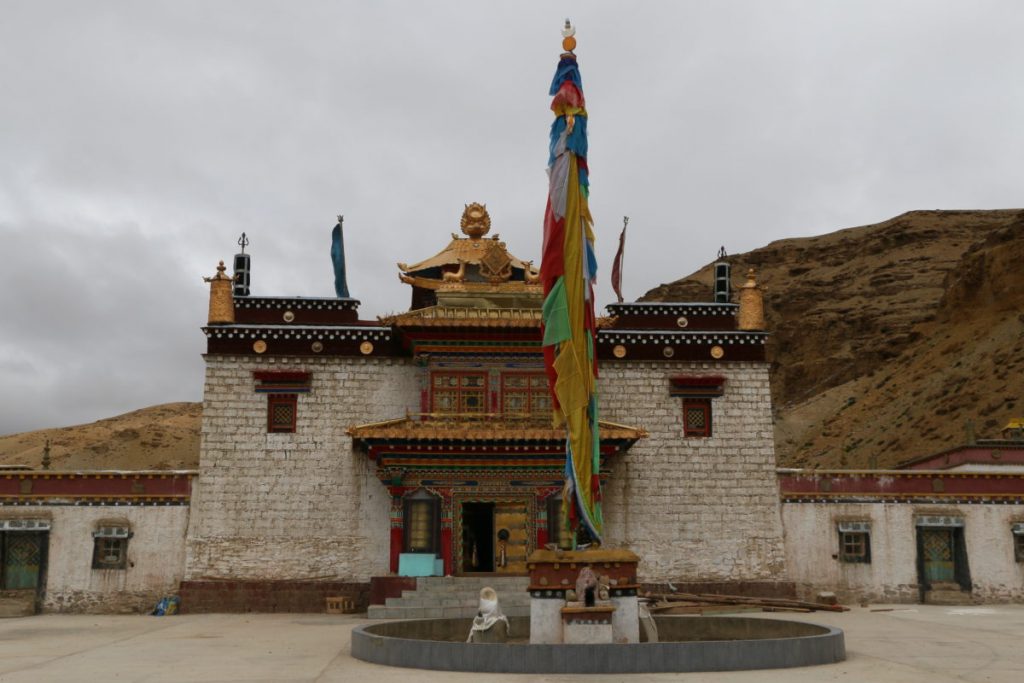
Although Mount Kailash was seen as the “highlight” of the trip for many, for me it actually wasn’t that exciting or spectacular. The weather was always a bit overcast, so we never got a glimpse of the mountain with its stark stone face contrast against a deep blue sky, perhaps the most iconic of the images of Kailash. And I never felt any specifically spiritual energy around the mountain, but did feel it in other places. So although Kailash did not have the same impact for me that it has on other pilgrims, I’m still very much glad that I had the change to go, and would definitely go again in the future.
Since it’s a once-in-a-lifetime chance for many people to visit Kailash, it only seems fitting to include a photo here at the end to round out this 2016 year in review. So here it is, sacred Mount Kailash, as seen from the southwestern side of the pilgrimage trail that circles it in the late summer of 2016.
So in conclusion, here’s to another year over, and to a hopefully good start to 2017.
Until next time…remember it is better to give than to receive.
###
